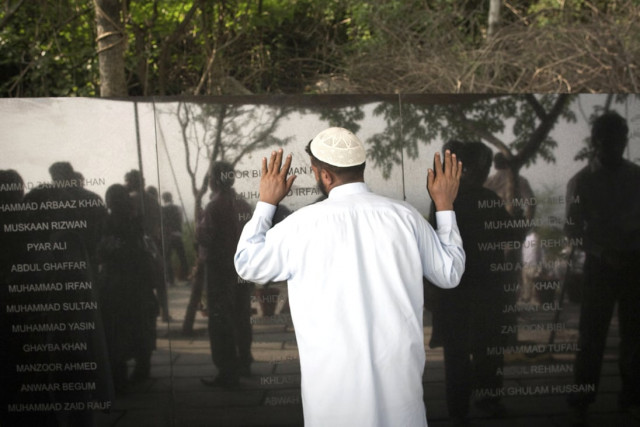An air crash and its aftermath
The company must, for the sake of its own business, take great care of the affectees.

An air crash and its aftermath
A section of the affectees who received compensation were not happy with the amount; others wanted to know why the investigation report into the mishap had not been made public by the government despite receiving it in March this year. The Civil Aviation Authority (CAA), which is in charge of the investigation, thinks that there was no bar on Islamabad to release the report. The report submitted by the CAA in March is now reportedly with the ministry of defence (the authority’s parent ministry), but it was with the CAA for a year, which means that there is an institutional hesitation about revealing all the facts for public consumption.
The CAA, keen to assure the affectees that it had done its job, says that “all aspects of the incident have been analysed” but does not say what the report considers responsible for the crash: Pilot error or a technical malfunction. It is clear that despite its right to reveal this information, the government is waiting for some answers about the manufacture and design of the plane from the companies — located in France, Germany and the US — from whom the plane had been purchased. It is curious that the CAA still claims the government could release the report. It must know that without the view of international experts from these leading companies, the report can be termed ‘interim’ and not complete.
The International Civil Aviation Organisation, of which the CAA is a member, says “that the state conducting the investigation should release the final report in the shortest possible time and, if possible, within 12 months of the incident”. Hence there must be important reasons why the government doesn’t want to jump the gun without first being fortified by the international professional view of the crash.
The plane was an Airbus A321, belonging to Airblue, which one could say is Pakistan’s second biggest airline after PIA, itself in considerable financial trouble. The report on the crash must consider the business side of the case if too excessive an alarm is created over it. Means of transport in Pakistan are shrinking after the near-death of the railways. Removal of public trust from the airlines will simply complicate the situation. According to an Airblue handout, the crashed plane was manufactured in 2000 and bought in 2006 — which is quite normal — had flown 34,000 flight hours and apparently hit by lightning while flying over Turkey, but cleared to fly thereafter. The Islamabad loss was the company’s first crash and second write-off, the first one following a ground mishap.
There are two aspects to the situation. One is that all steps should be taken to ensure that the mishap is examined threadbare and the operator made aware that his business is under strict scrutiny demanding failsafe observance of safety regulations. The other is the satisfaction provided to the bereaved families of those who lost their lives in the accident. The company must, for the sake of its own business, take great care of the affectees. It is quite possible that after it acquits itself with distinction in this case, its business may actually improve because of a better level of public trust. It should devote itself more diligently to maintaining its contact with the families of the dead. It will not cost much but it will redound to the advantage of the company. The government’s attitude is not punitive towards the company, and that is the right course. The future of air travel in Pakistan is in the private sector and a good beginning must be made now.
Published in The Express Tribune, July 30th, 2011.














COMMENTS
Comments are moderated and generally will be posted if they are on-topic and not abusive.
For more information, please see our Comments FAQ